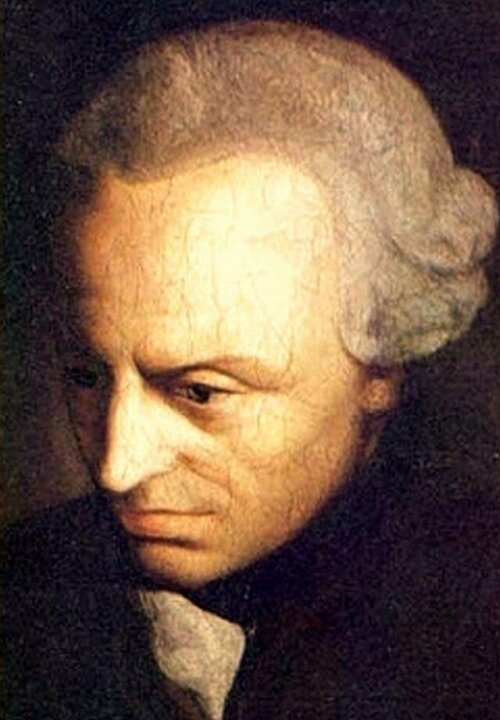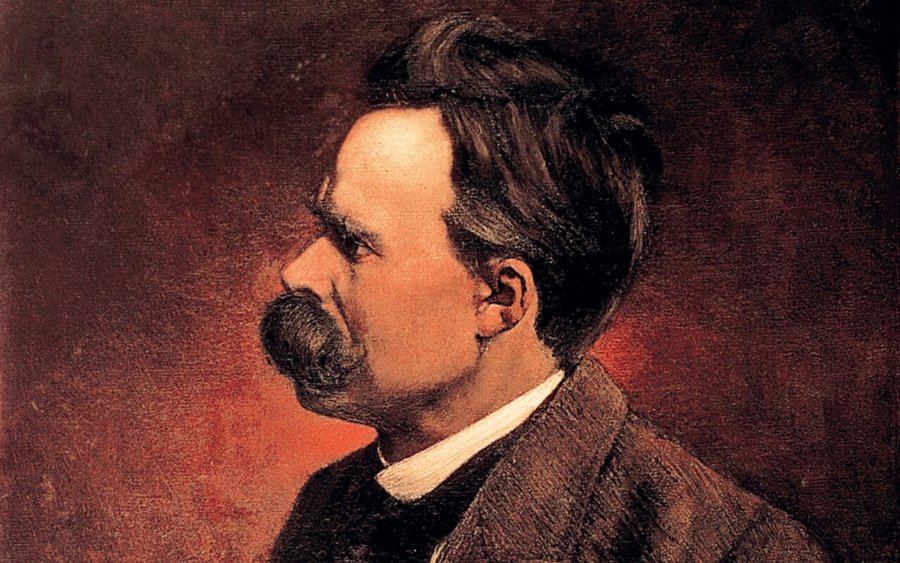Clare Graves and Spiral Dynamics
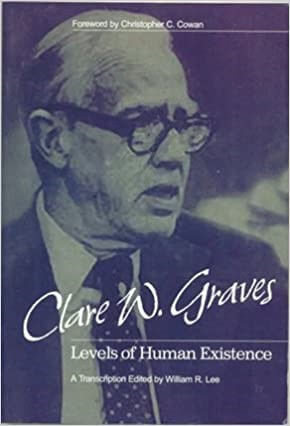
Clare Graves is an American psychologist who started teaching in the 1940s and retired in 1978. His “emergent cyclical theory of human development” began by asking people to describe their conception of a successful person, and then ranked them in a developmental hierarchy. Someone’s notion of success reveals what he admires most, and thus his values and ideals.[1]
Don Beck contacted Graves after Graves published an article in The Futurist in 1974 outlining his theory.[2] Graves’ health was declining and Beck wanted to make sure Grave’s ideas were not lost. Beck was later joined by Christopher Cowan with whom he wrote Spiral Dynamics in 1996 twenty-two years later. They introduced color-coding for the levels.[3] The levels cycle between being more individualistic and more conformist.[4] Each level represents a survival advantage over the next and tends to be an improvement. Purple tribal life offers an advantage over Beige “bands” of people wandering the savanna, while Red empires offer more protection still; messing with a city in an Empire risks the wrath of, say, the giant Roman Imperial Army, while Blue law-governed societies are more stable and predictable. At the Blue level, even the King is supposed to be below the law, not above it. Knowing what the rules are, even if the rules are unfair or imperfect, is generally better than an unpredictable free-for-all.
Each level is transcended and included as a person develops. If necessary, depending on circumstance, it is possible to re-access a lower level within yourself. If someone were to find himself on a desert island, Beige level would need to kick in with its focus on animalistic survival. People who find themselves in this situation report that their senses become much more focused and keener. In Grave’s theory, both progress and regression are possible.
The levels have an ontogenetic (growth of the individual) and phylogenetic (evolution of the species) aspect. The levels apply to individuals as they mature, but these levels developed out of groups historically. Each level represented the cutting edge of human cultural evolution at some point in time and groups of people will have an average level of development, with some individuals being above this level, and some below. Just as the human fetus is said to recapitulate various evolutionary stages in the emergence of homo sapiens, including having gill slits at one point, the person does the same thing culturally.
It is important to remember that people can be inconsistent and take a “Blue” attitude to religion (fundamentalist) while being at least “Orange” (rational) at work, such as computer programmers. Programmers have to be scrupulously logical and rational to do their jobs because any line of code that does not rigorously adhere to truth-preserving rules will stop the code from working. But there is no necessity that they extend this to other aspects of their lives.
The point of learning the theory is to try get a better understanding people’s perspectives by becoming more consciously aware of the value distinctions they make between different types of people, and thus the level from which they are operating. It can be counterproductive to talk to a person in the language of one level of development when their mode of thought is predominantly at another level. Someone at a lower level is completely incapable of understanding higher level perspectives, so that is crucial to bear in mind. A comparison could be made between concrete operational and formal operational people. The former are rule-following, without being able to explain why the rules are the way they are or being able to reconcile conflicts with rules, while formal operational people are capable of genuine abstract thinking and can think about thinking, and describe their own rational decision-making in a step-by-step process, at least some of the time. An easier comparison could be made to way people instinctively make the adjustment when talking to children. Some things a seven-year-old understands, a three-year-old just cannot. Likewise, a police officer will use different language and appeal to different values when talking to a street criminal, than when interacting with a middle-class homeowner, or a white-collar criminal.
“If we say at a given time a person is acting Blue, it means that generally their needs are for belongingness, their worldview is mythic, and their value system is absolutistic. Various cultural events can also be measured by their degree of development—and their movement from one to another as they unfold can also be followed: from archaic (beige) to tribal (purple and then red) to traditional (blue) to modern (orange) to postmodern (green) to integral (yellow) to even higher structures that are now evolving.”[5]
“Beige (archaic—a proto 1st-person perspective): the beige level signifies a degree of development that is in many ways imbedded in nature, body, and the gross realm in general. Beige level exhibits an archaic worldview, physiological needs (food, water, shelter, etc.), a self-sense that is minimally differentiated from its environment, and is in nearly all ways oriented towards physical survival. Although present in infants, beige is rarely seen in adults except in cases of famine, natural disasters, other catastrophic events, [and advanced Alzheimer’s]. Beige is also used as a kind of catch-all term for all earlier evolutionary stages and drives.”[6] It is not that different from an animal-level of existence where the development of mind is minimal.
“Purple (egocentric—able to take a 1st-person perspective): Purple level tends to be the home of egocentric drives, a magical worldview, and impulsiveness. It is associated with tribalism. It is the first recognizably human level associated with story-telling, dance, and song. It is expressed through magic, animism, kin-spirits, and such.” [Young children primarily operate with a purple, magical, worldview. Superheroes have magical abilities like being able to fly, although the “hero” part of the equation is more associated with Red.] Purple emotions and cognition can be seen driving cultural phenomena such as Burning Man, Buffy the Vampire Slayer, or superhero-themed comic books or movies.”[7] Historically, phylogenetically, we can think of it as being typical of tribal communities. People are connected by blood ties. Someone who is not a member of the extended family, or tribe, is not someone cared about and may even be regarded as a demon rather than as a fellow human being. Mircea Eliade writes that for tribal man, the demons live in chaos, and “we” live in a cosmos; an orderly harmonious universe. Living in chaos is what makes them demonic.[8] And phenomenologically,[9] any place with no recognizable landmarks, no shelter, with no known food resources, watering holes, no access to help from friendly tribe members, i.e., a place where you will probably die from hunger, thirst, cold, being eaten by wild animals, or killed by hostile humans, where you are considered “lost,” is chaos. And it is true, that if the “demons” invade, AKA the members of a hostile tribe, they are likely to turn the cosmos into chaos. Because people have such poor ego development at this level they are not good at differentiating between the subjective and objective; interiors and exteriors, and this is where their animism and anthropomorphism comes in. They attribute their feelings and motivation to nonhuman objects like rivers – it flooded because we did something wrong, or volcanos erupt because the volcano god is angry.
Purple level was historically matriarchal and associated with human sacrifice. Human sacrifice is thought of as a gift to the gods, but on a practical level it provides social cohesion by creating unanimity minus one. The tribe becomes a unified mob that sacrifices a victim. The war of all against all becomes a war of all against one.
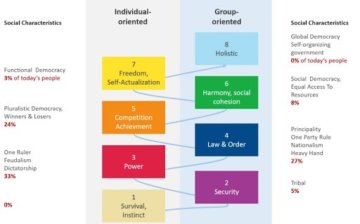
“Red (ego-to-ethnocentric—able to take a 1st- to 2nd-person perspective): Red is connected to the “warrior ethic,” that admires strength and courage. The most successful person is regarded as the strongest, bravest person. This kind of thing can be seen in fairy tales where the prince wins the hand of the princess and gets half the kingdom by defeating a dragon – even though killing dragons and governing are two very different skills. Strength and courage is shown by overcoming obstacles; climbing the highest mountain, sailing the seven seas, crossing the desert and showing you are worthy. Part of the idea is that the ruler is strong and brave and thus in a position to protect the populace. This makes some kind of poetic sense, but really you need someone wise who is good at administration, and the army can be used by him to protect the people.
Red level is the marker of egocentric drives based on power, where “might makes right,” aggression rules, and there is a limited capacity to take the perspective of an “other.”[10] Red impulses emerge with the “terrible twos,” which involve children saying “No!” This represents self-assertion on the part of the child where he breaks away from the parent emotionally and stresses that his likes and desires are not necessarily those of the parent. This kind of defiance is an important part of growing up, as annoying as it often is for parents.
The Red idea about the gods is the power gods. God is God because he is bigger and stronger than you and his rule is capricious. He gets to do whatever He wants, including smite you. He is God because he is mighty, not because he is loving and wise.
Red self-assertion is seen in the very young and reemerges in teenagers who are trying to differentiate themselves from their parents. My parents have x, and y, values. What are my own? It is part of readying themselves for an independent life. This kind of knee-jerk nay-saying can sometimes be seen in college students where the authority figure and somewhat parental role of the professor is substituted for the actual parents. So, some behavior of some students is of the “I hate you Daddy” variety. Simply disagreeing does not demonstrate this. It is only when there is some strange compulsion to disagree with everything the professor says. No professor, no person, is smart enough to be wrong all the time. It is hard to avoid accidentally being right. To always be wrong, it would be necessary to know what is right concerning everything, just to make sure you were wrong! The old “a stopped [analog] clock is right twice a day” adage captures this. Mark Twain humorously illuminated the transition from red rebellion and self-differentiation to relative mature independence when he wrote: “When I was a boy of 14, my father was so ignorant I could hardly stand to have the old man around. But when I got to be 21, I was astonished at how much the old man had learned in seven years.”
Red is the level of heroes who save others and risk their lives in the name of honor and courage, not really altruism. Where Purple represents strong group conformity, you are your social role and you are expendable, Red represents self-assertion and thus is much more individualistic. Empires can be considered red – might makes right; tribes, cities, and regions are included by force. At Green, by contrast, someone might lead his men’s group by being the most “in touch with his feelings.” At the Red level and below, morality (such as it is) will be about reward and punishment. It is only bad if you get caught; only good if you are rewarded. This represents the pre-conventional level of moral development. It is pre-moral. The behavior can seem “good” but the motive for the “good” behavior is egocentric.
Red heroes will risk their lives to prove they are strong, courageous and have honor. So, policemen and fire fighters might exemplify this level. The unhealthy version of Red can be seen in criminals, alcoholics, and drug addicts, who are lawless and egocentric. They might think morality is a con job – a trick to deceive people into inattention. Watch your back. Trust no one. Establish that you cannot be intimidated and do not take any crap from anyone. Prisons tend to be dominated by red; might makes right, the strong rule the weak. If someone steals your food, break your chair over his head; not because you want the food so badly, but because if you appear weak you will be subservient for your time in jail. Streetwise kids will often fight back against even the strongest, biggest bullies. They know they will lose, but they will inflict some damage on the bully; making the bully pay a price for his behavior, and establishing that they will not be easily victimized.
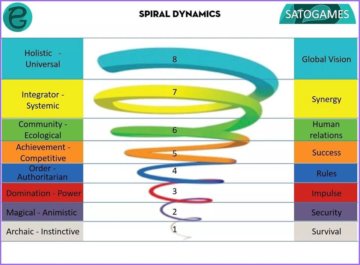
Red is the law of the jungle and relations between countries often exhibit red lawless might makes right behavior. Gang members are often red – the person who leads the gang will be the scariest, toughest person, not the one with the best business plan, or the smartest. Again, it is important to recognize that each level has healthy and unhealthy versions.
“Blue (ethnocentric—able to take a 2nd-person perspective): Blue indicates a worldview that is mythic, and mythic worldviews are always held as absolute (this stage of development is often called absolutistic). Instead of “might makes right,” blue ethics are more oriented to the group and the rule of law, but one that extends only to “my” group. Grade school and high school kids usually exhibit blue motivations to “fit in.” Blue ethics help to control the impulsiveness and narcissism of red. Culturally, blue worldviews can be seen in fundamentalism (my God is right no matter what); extreme patriotism (my country is right no matter what); and ethnocentrism (my people are right no matter what).”[11] This black and white style of thinking rejects shades of grey and nuance and insists “You are either with us or against us;” ignoring the fact that someone might like some aspects of a something, and not others. In Blue level religion, people are split into “true believers” and the damned who are going to hell. This attitude can be taken to political matters also; with crude divisions between the “good guys” and the bad.
The Blue God is a just God. He is the rule-maker; the bringer of law, and thus order. He is not capricious. His followers know in advance what will be rewarded and what will be punished. This makes life much more predictable. An alcoholic, drug-taking dad, or one suffering from mental illness, is likely to cause severe anxiety in his children because his behavior is unpredictable. One day he hits you when he sees you and the next he pats you on the head. He is the boss, but only because he is bigger and stronger than you. A “Blue” father, establishes the rules and follows them himself. He is just. He provides stability and structure. The Red father does not. The drawback of the Blue father is that he provides a little too much structure with very little flexibility, although this level of structure can be necessary for, say, a foster child who is coming from a background of severe inconsistency of upbringing, instability of circumstance, and emotional uncertainty.
Blue is the level of law and order, conformity, ethnocentrism, patriotism and belonging needs. Socially and historically we might associate it with agriculture and feudalism. We distinguish between true believers and nontrue believers whether it is fundamentalist religion, feminism, ecology, or Marxism. Though these last three emerge at higher levels, they can be approached in a Blue fundamentalist manner. You care about members of your group defined by their beliefs, or their citizenship, rather than tribal blood-ties. For Blue, phylogenetically, if you criticize the government you are unpatriotic. Morality means following the rules. At this conventional level of moral development you think counter-factually and abstractly, up to a point, so you ask yourself – “what would my neighbors think if they knew what I was about to do.” It is not because the Blue level person is afraid of getting caught. It is that he is using his assessment of other people’s values to determine his own. This makes Blue a more truly moral level that does not require surveillance by others to do the right thing. It is enough to merely imagine what others would think to behave morally. It is a conventional, conformist, level of moral development and involves rule-following.
Blue level people can feel guilty and do think in terms of praise and blame – but it is praise and blame in the abstract – what your neighbors, friends, community would think of you if they knew what you are contemplating doing. Morality and thinking in general tends to be very black and white. You can take other people’s perspectives, that is how you can anticipate whether others would praise or blame you if they knew what you were doing. Blue does not believe in social mobility; it is more important who your parents are. Blue is authoritarian and paternalistic. They know what is right and will impose it whether you agree or not, given an opportunity.
“Orange (worldcentric—able to take a 3rd-person perspective): In an orange worldview, the individual begins to move away from the blue conformity that reifies the views of one’s religion, nation, or tribe. The orange worldview often begins to emerge in late high school, college, or adulthood. Culturally, the orange worldview realizes that “truth is not delivered; it is discovered,” spurring the great advances of science and formal rationality. Orange ethics begin to embrace all people, “We hold these truths to be self-evident, that all men are created equal….” Ayn Rand’s Objectivism, the US Bill of Rights, and many of the laws written to protect individual freedom all flow from an orange worldview.”[12]
Orange divides the world between winners and losers. It believes in a meritocracy where social and economic promotion is attained by your merits, not your connections, or family. It is the first rational altitude. It is worldcentric. It embraces scientific materialism. Theologically, at the Orange level, someone either becomes an atheist or a liberal theologian reinterpreting mythic religion from a rational perspective. It is competitive and can be harsh, but does believe in the equality of opportunity, if not result. Morally it would be post-conventional and may break the rules in the name of some higher moral principle that seems to be relevant in a particular circumstance.
It is the level of positivism. Science colonizes the other quadrants where it does not belong. Scientism is the idea that only scientific truths are really true.
“Green (worldcentric): Green worldviews are marked by pluralism, or the ability to see that there are multiple ways of seeing reality. If Orange sees universal truths (“All men are created equal”), Green sees multiple universal truths—different ones for different cultures. Green ethics continue, and radically broaden, the movement to embrace all people. A Green statement might read, “We hold these truths to be self-evident, that all people are created equal, regardless of race, gender, class….” Green ethics have given birth to the civil rights, feminist, and gay rights movements, as well as environmentalism.
The Green worldview’s multiple perspectives give it room for greater compassion, idealism, and involvement, in its healthy form. Such qualities are seen by organizations such as the Sierra Club, Amnesty International, Union of Concerned Scientists, and Doctors Without Borders. In its unhealthy form Green worldviews can lead to extreme relativism, where all beliefs are seen as relative and equally true, which can in turn lead to the nihilism, narcissism, irony, and meaninglessness exhibited by many of today’s intellectuals, academics, and trend-setters…. Not to mention another a “lost” generation in students.”[13]
A word that describes the Green phenomenon is “leveling.” Highs and lows are all reduced to the same level, as though Shakespeare is not radically better than reality TV. The trouble is that any notion of development, from worse to better, is ruled out by this leveling tendency. One cannot strive to become more literate, more numerate, more athletic, if there are no higher levels to strive for. This is also where nihilism comes in. Everything becomes pointless.
In Green’s opposition to hierarchies it fails to distinguish good hierarchies e.g. being literate is better than being illiterate, or only semi-literate, and bad “dominator” hierarchies that are oppressive, such as one race or sex being better than another.
Because of its unwillingness to differentiate between different levels of development, Green level can mark a return to Purple “magic” level religion. One of the more notorious examples is the idea of “crystals” having magical properties, or wild dancing around campfires to celebrate the winter solstice, for instance, that would originally have ended with human sacrifice. In education and elsewhere, the desire to be compassionate and avoid hurt feelings makes many activities meaningless, such as giving out medals just for participating, or making children give Valentine’s Day cards to every member of their class of both sexes. A more recent example involves several prominent universities, such as UC Berkeley, ceasing to use SAT scores for admitting students. SAT scores were originally used to avoid the rich and well-connected from getting into colleges at other people’s expense. So, SATs had an equalizing effect. If one student can score better than another on the basis of knowledge and intelligence, then it does not matter his poor social background or lack of family connections. Now, SATs are seen as a barrier to entry to be avoided because some people have low scores. This is connected to the phenomenon known as “grade inflation” where, over the years, higher and higher letter grades have been awarded for the same low-quality work. So, what might have been a “C” in years past becomes a “B+”. “C” is supposed to mean “average.” So, when a university like Harvard has “A” or “A-” as an “average” grade, you can see grade inflation at work. No matter what the entry requirements for a college, some students will be better than others. Oxford University, by contrast, has First, Second, Third class honors, or no honors and their selection standards are no lower than Harvard’s.
Green marks the last level that thinks of itself as the “best,” “highest” level. There is no best or highest level. There is no postulated “final” stage of value development. It just keeps going.
“Yellow (worldcentric to kosmocentric): Yellow marks the beginning of an integral worldview, where pluralism and relativism are transcended and included into a more systematic whole. The yellow worldview honors the insights of the green worldview, but places it into a larger context that allows for healthy hierarchies, and healthy value distinctions.
Yellow knows there is no highest level and does not imagine that it has reached the end point of cultural evolution.
Perhaps most importantly, a yellow worldview begins to see the process of development itself, acknowledging that each one of the previous stages (purple through green) has an important role to play in the human experience. Yellow consciousness sees that each of the previous stages reveals an important truth, and pulls them all together and integrates them without trying to change them to “be more like me,” and without resorting to cultural relativism (“all are equal”).
It knows that each level is necessary to reach the next level – none can be eliminated.
Yellow worldviews do more than just see all points of view (that’s a green worldview) – it can see and honor them, but also critically evaluate them.”
Turquoise (kosmocentric): Turquoise is a mature integral view, one that sees not only healthy hierarchy but also the various quadrants of human knowledge, expression, and inquiry (at the minimum: I, we, and it). While yellow worldviews tend to be secular, turquoise is the first to begin to integrate Spirit as a living force in the world (manifested through any or all of the 3 Faces of God: “I”—the “No self” or “witness” of Buddhism; “I/thou”—the “great other” of Christianity, Judaism, Hindusm, Islam, etc.; or “it”—the “Web of Life” seen in Taoism, Pantheism, etc.).
Indigo (continues and deepens kosmocentric): Evolution and development continues growing, and we have no reason to believe it will stop with the stage that we are at now. We have indicated all of these higher possibilities with the next color in the rainbow after turquoise, which is indigo.”[14]
Notes
[1] What follows is adapted from and contains copious quotations from http://pialogue.info/definitions/Integral_Altitude.php and summaries like http://www.kenwilber.com/blog/show/446,
[2] http://www.clarewgraves.com/articles_content/1974_Futurist/1974_Futurist.html
[3] I was introduced to Spiral Dynamics through the writings of Ken Wilber. His writing and version of the theory primarily informs the following descriptions of the levels.
[4] Graves’ idea was that the levels varied between conforming to the environment, and trying to make the environment conform to human wishes.
[5] http://pialogue.info/definitions/Integral_Altitude.php I have changed the names of the colors to match those of Beck and Cowan.
[6] http://pialogue.info/definitions/Integral_Altitude.php
[7] http://pialogue.info/definitions/Integral_Altitude.php
[8] Eliade discusses this in The Sacred and the Profane where he describes what he calls “religious man,” who is also tribal. Bizarrely, Eliade did not seem to have a remotely
[9] From the point of view of subjective awareness – how things feel and seem to the subject pre-theoretically, or non-theoretically. Phenomenology was a philosophical movement that attempted to describe human experience as neutrally and nontheoretically as possible.
[10]http://pialogue.info/definitions/Integral_Altitude.php
[11] http://pialogue.info/definitions/Integral_Altitude.php
[12] http://pialogue.info/definitions/Integral_Altitude.php
[13] http://pialogue.info/definitions/Integral_Altitude.php
[14] http://pialogue.info/definitions/Integral_Altitude.php


